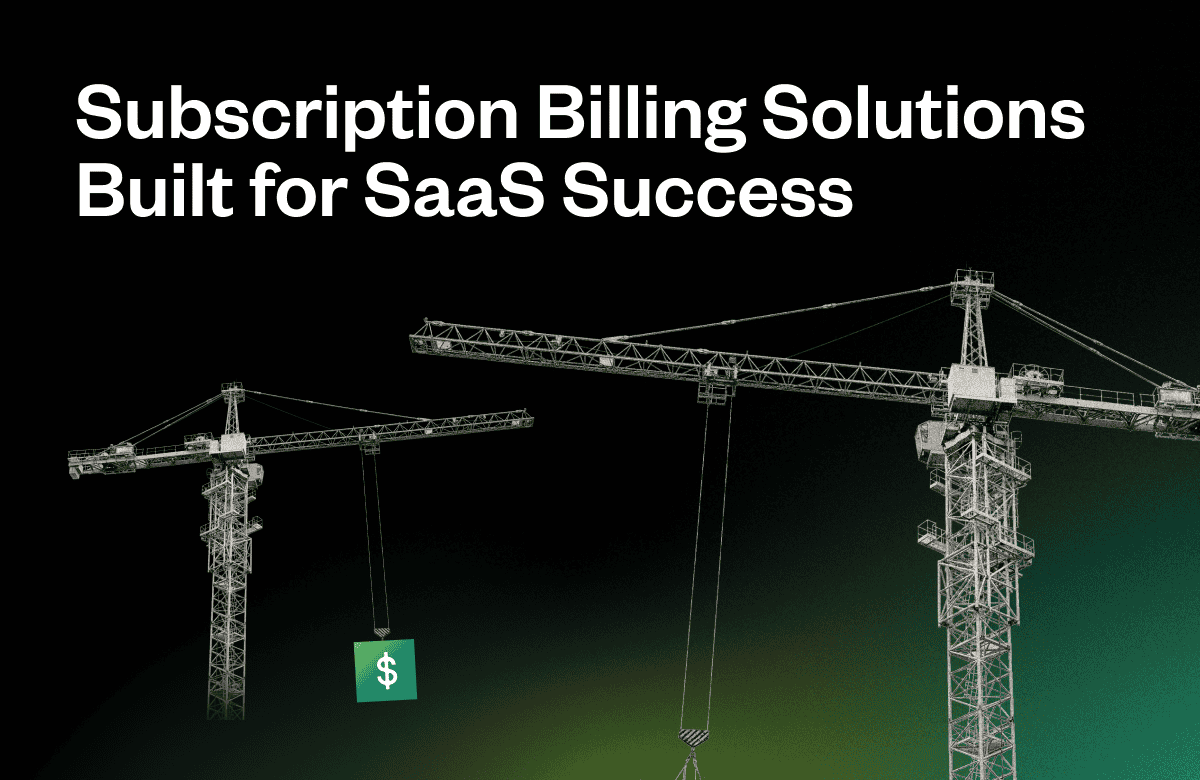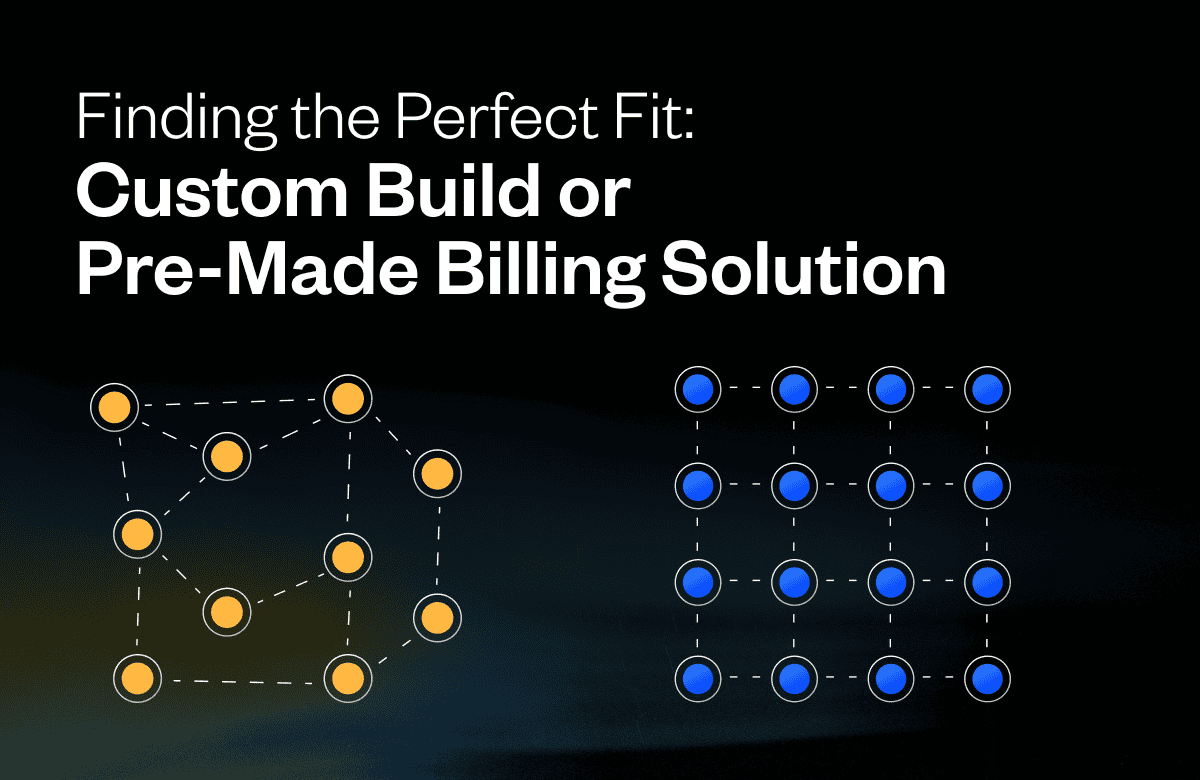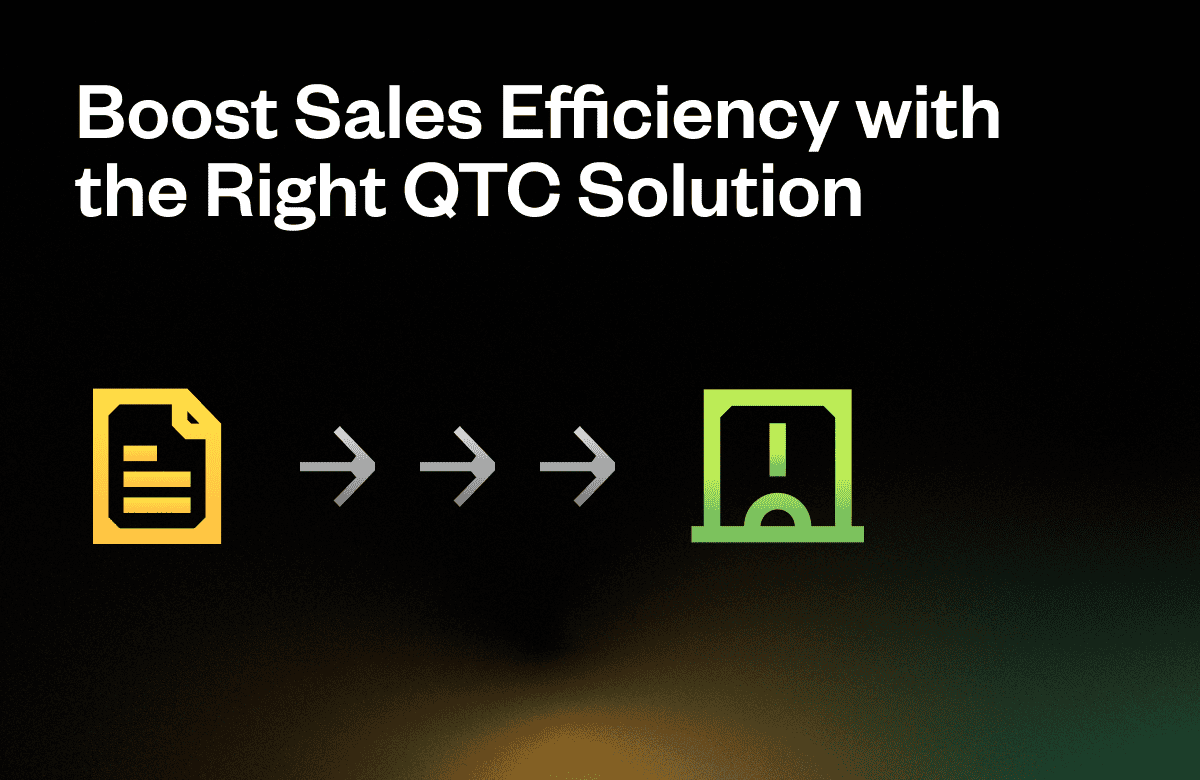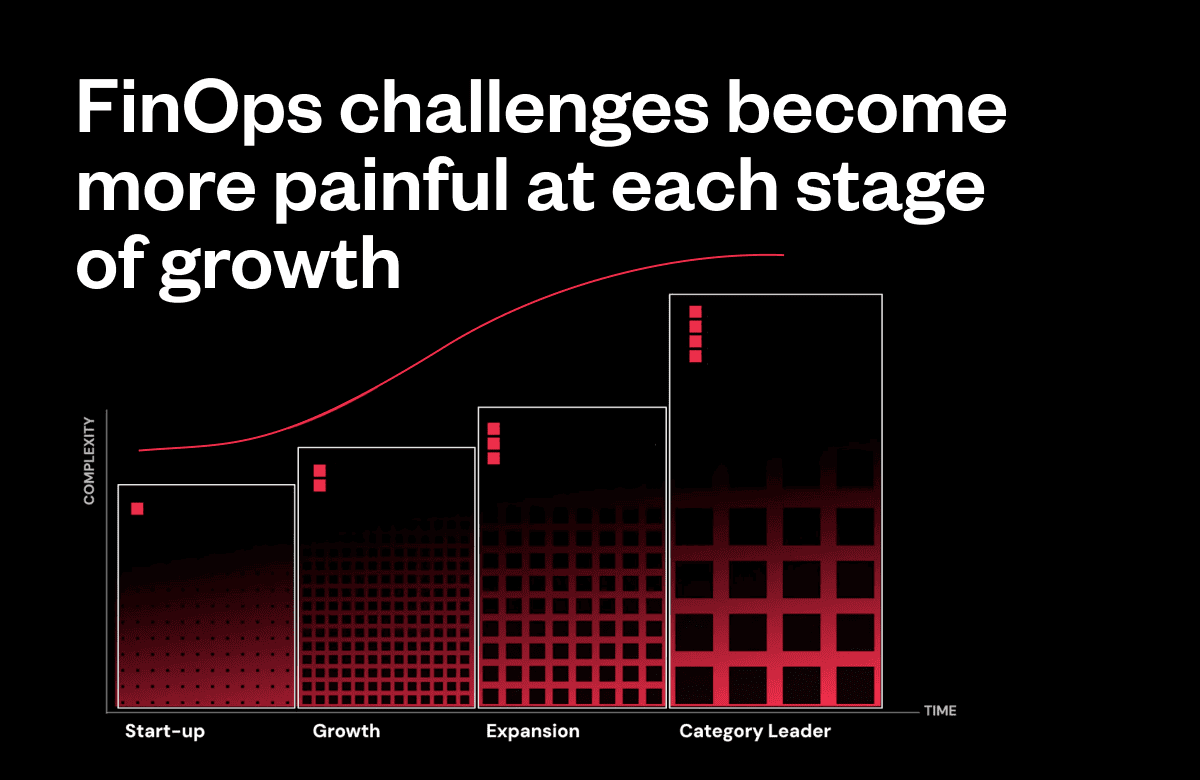For SaaS companies, subscription billing software sits directly between customer experience and financial operations.
On one hand, these platforms literally shape how clients engage with recurring payments, upgrades, downgrades, and other billing touchpoints that impact satisfaction and retention over time. But they also have massive backend implications for accounting, revenue management, and overall business growth.
But with so many subscription billing software options available, it can be tough to determine the right choice for your business. That’s why we’ll be comparing twelve of the best subscription billing platforms head-to-head so you can decide which one best fits your needs.
What to look for in subscription billing software
Choosing the right subscription billing software can transform how your business operates, helping you save time, reduce errors, and scale efficiently. Here are just a few of the features you should be looking for:
- Recurring billing automation: Look for tools that automate recurring invoices, streamlining your workflows and minimizing manual errors. This kind of automation will ensure that your billing cycles run smoothly and free up your team for higher-value tasks.
- Flexible pricing models: Whether you use tiered, usage-based, or flat-rate pricing, a platform that gives you access to customizable pricing options allows you to cater to customers across your total addressable market—whether they’re a startup or enterprise customer.
- Robust invoicing and payment gateways: Ensure that your software of choice supports seamless payment processing across multiple payment gateways to accommodate your customers’ payment preferences.
- Customer retention tools: Features like churn management and dunning management are vital for reducing customer loss. They help recover failed payments and can improve your retention rates by automating payment recovery efforts.
Other must-have features include subscription lifecycle management, which allows you to handle customer onboarding, upgrades, cancellations, and adjustments with ease. Plus, integration with tools like QuickBooks and other accounting software ensures that you can process financial reports without having to manually pull data between these systems.
8 best subscription billing platforms and subscription management software
With numerous subscription billing solutions available, it’s important to understand their functionality, pricing, and ideal use cases to select the platform that best meets your needs. In this list, we’ll take a look at the twelve best subscription management tools based on their ability to simplify billing management, support scalable growth, and deliver seamless experiences for both you and your customers.
1. Maxio
Maxio is a powerful billing and Financial Operations platform designed specifically for SaaS companies, offering advanced subscription billing software and robust features for managing complex billing needs. Formerly known as Chargify and SaaSOptics, trusted names in subscription billing for B2B SaaS, Maxio builds on that legacy with enhanced tools for automation, scalability, and financial management.
What sets Maxio apart is its unmatched revenue recognition capabilities, ensuring compliance with accounting standards like GAAP. This makes it an ideal choice for businesses aiming for accurate financial reporting while scaling efficiently. With advanced analytics, Maxio provides deep insights into critical subscription metrics such as Monthly Recurring Revenue (MRR) and churn, enabling companies to make data-driven decisions.
Compared to other platforms, Maxio stands out with its seamless integration with popular tools like Salesforce and QuickBooks, streamlining operations across departments. Its comprehensive automation reduces manual effort, giving businesses more time to focus on growth. For SaaS companies looking to expand globally, Maxio’s ability to handle international payments and multi-currency transactions is a game-changer.
Maxio is more than just a subscription billing solution—it’s a complete financial operations platform built to support growth at any scale. Learn more about Maxio’s capabilities in subscription billing software and its industry-leading revenue management tools.
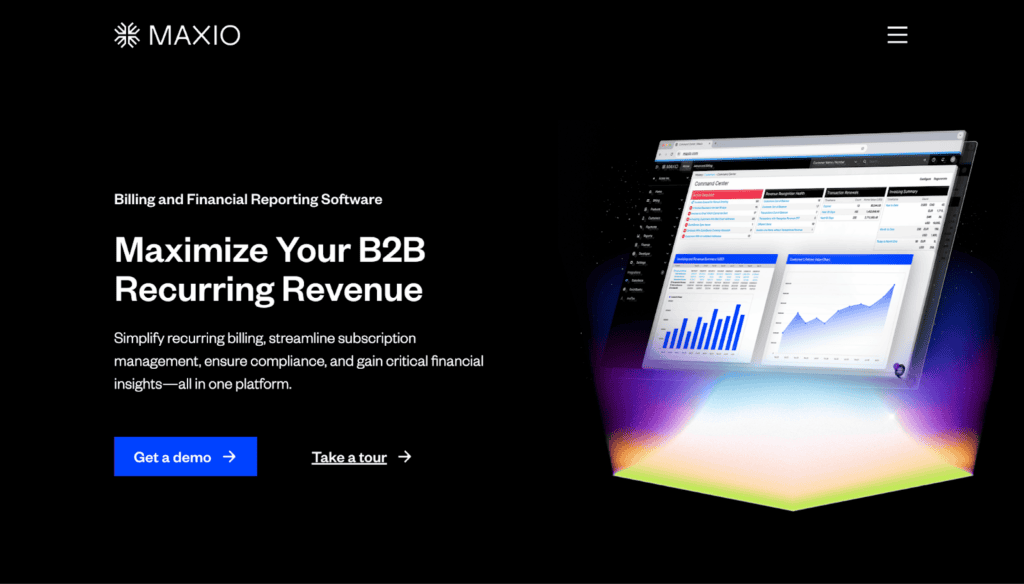
Maxio’s key features
Maxio delivers a suite of powerful features designed to simplify subscription billing and support SaaS companies at every stage of growth. Here’s a closer look at its standout capabilities:
- Automated subscription billing: Maxio eliminates manual effort by automating recurring billing and invoicing. This not only reduces errors but also saves valuable time, allowing teams to focus on strategic initiatives.
- Revenue recognition: Ensuring compliance with accounting standards like GAAP, Maxio helps businesses accurately track and report revenue. This is especially crucial for companies managing complex billing scenarios or preparing for audits. Learn more about Maxio’s industry-leading revenue recognition tools.
- Flexible billing models: From tiered and usage-based pricing to one-time charges, Maxio’s versatile system accommodates various business models. This flexibility enables businesses to adapt to changing customer needs while optimizing revenue. Discover how Maxio supports flexible billing.
- Global payments: Maxio simplifies international transactions by supporting multiple currencies and regions. For businesses with a global presence, this feature ensures seamless payment processing across borders.
- Advanced analytics: With deep insights into subscription metrics, customer behavior, and financial performance, Maxio equips businesses with the data they need to make informed decisions. Explore Maxio’s powerful analytics.
- Seamless integrations: Maxio integrates effortlessly with popular tools like Salesforce, QuickBooks, and other CRMs, ensuring smooth workflows across departments. This makes it easier to connect billing operations with sales, accounting, and customer relationship management. Learn more about Maxio’s extensive integrations here.
With these comprehensive features, Maxio stands out as the ultimate subscription billing solution, empowering SaaS companies to streamline operations, enhance customer satisfaction, and drive scalable growth.
Maxio pricing
Maxio offers a range of subscription plans designed to accommodate businesses of varying sizes and billing complexities:
- Build: A free 30-day trial providing a developer-friendly sandbox to explore billing features.
- Grow: Priced at $599 per month for businesses with up to $100,000 in monthly billings, this plan includes comprehensive B2B subscription management, revenue recognition, and reporting tools.
- Scale: Tailored for enterprises with higher billing volumes and advanced requirements, this plan offers customized solutions with volume-based discounts.
For organizations with complex billing needs, Maxio provides custom quotes to ensure the platform aligns with specific business requirements. Additionally, Maxio offers a free 30-day trial, allowing businesses to evaluate its features before committing.
To explore the best fit for your company, visit Maxio’s pricing plans for detailed information.
2. Chargebee
Chargebee is a widely trusted subscription management platform designed for SaaS companies seeking to streamline cloud-based billing operations. Known for its robust capabilities, Chargebee excels in automating invoicing and supporting flexible pricing models, including tiered, usage-based, and custom plans. These features make it a go-to solution for businesses looking to optimize their checkout process and offer tailored billing experiences.
However, while Chargebee stands out in subscription automation, it falls short in advanced revenue recognition and comprehensive financial management. For companies with complex billing requirements or a need for in-depth analytics, Maxio offers a more sophisticated alternative.
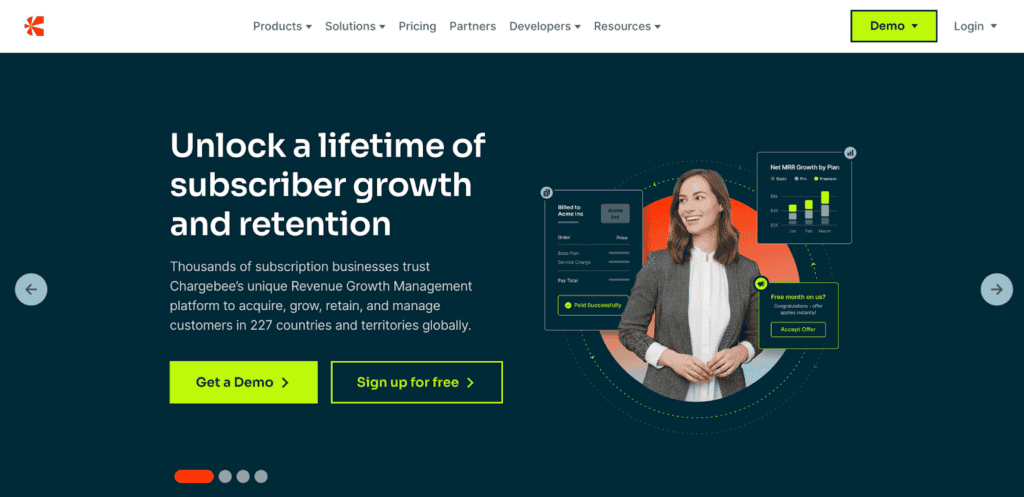
Chargebee’s Key Features
- Automated invoicing and billing: Chargebee simplifies invoicing by automating the entire process, reducing manual errors, and ensuring consistent recurring payments. This automation saves time and enhances operational efficiency for growing businesses.
- Flexible pricing models: Chargebee supports usage-based, tiered, and one-time billing, allowing businesses to adapt pricing strategies to their unique customer needs. This flexibility is ideal for SaaS companies offering diverse plans or add-ons.
- Revenue recognition tools: The platform includes basic revenue tracking capabilities, ensuring compliance with accounting standards. While effective, it doesn’t match Maxio’s depth in managing complex revenue workflows.
- Multiple payment gateways: Chargebee integrates with numerous payment gateways, enabling seamless transactions and expanding global reach. This ensures a smooth checkout experience for customers.
- Global tax management: For businesses operating internationally, Chargebee simplifies tax compliance, including VAT and sales tax, making it easier to manage cross-border operations.
Chargebee’s strength lies in its intuitive cloud-based interface and ability to adapt to various business models. However, companies with advanced financial needs may find Maxio a better fit for deeper insights and scalable solutions.
Chargebee pricing
Chargebee offers a flexible pricing structure designed to support businesses at various stages of growth, with plans catering to startups, scaling companies, and enterprises:
- Starter plan: Ideal for new businesses, this plan is free for the first $225K of cumulative billing, after which a 0.75% fee is charged on additional billings. With a pay-as-you-go model and no annual commitment, it’s perfect for startups testing their subscription strategies.
- Performance plan: Priced at $599 per month, this plan accommodates up to $100K of billing per month and charges 0.75% on additional billings. An annual commitment is required, with discounts available for upfront payments, making it ideal for businesses ready to scale their operations.
- Enterprise plan: Tailored for larger businesses with more complex needs, this plan offers custom pricing to match unique requirements. Contact Chargebee for a personalized quote.
Chargebee’s pay-as-you-go flexibility ensures businesses can start with minimal risk, scaling their subscription billing solution as they grow.
3. Zuora
Zuora is a powerful, enterprise-grade subscription billing platform, designed for businesses managing complex pricing models and operating on a global scale. With advanced tools for handling usage-based and multi-tiered billing models, Zuora is ideal for companies with intricate billing requirements and international reach.
However, Zuora’s robust features come with a steeper learning curve, making it less suited for smaller or mid-sized businesses. Its interface, while feature-rich, can feel overwhelming.
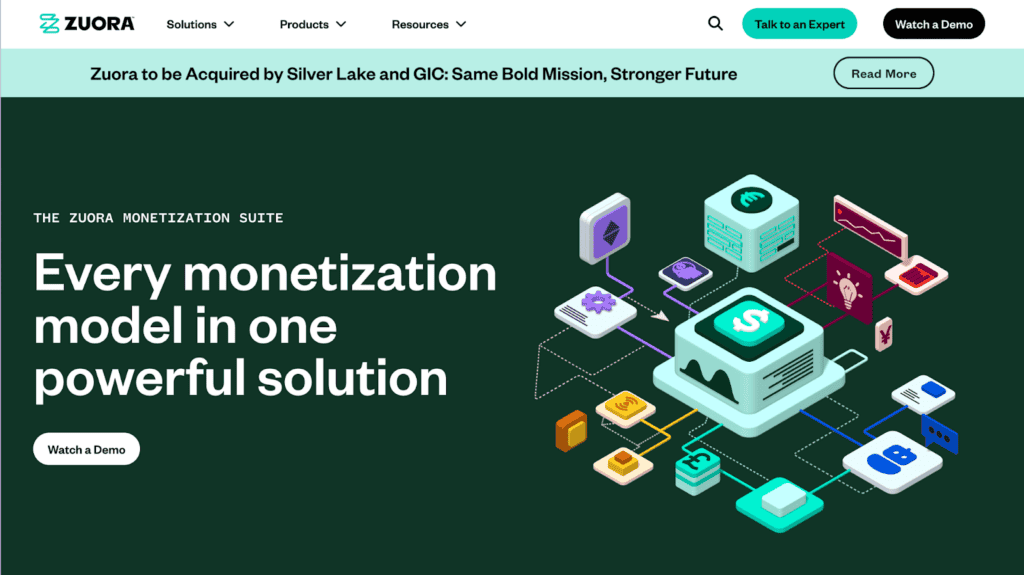
Zuora’s Key Features
- Complex subscription models: Zuora supports a wide range of subscription models, including multi-tiered, flat-rate, and usage-based plans. This flexibility makes it a preferred choice for enterprises with diverse customer segments.
- Revenue recognition: Ensuring compliance with accounting standards, Zuora’s tools provide accurate revenue recognition for various subscription types, reducing manual effort and error.
- Global payments and tax compliance: Zuora excels in managing recurring billing across multiple currencies and regions, simplifying international payment processing and ensuring adherence to tax regulations like VAT and sales tax.
- Subscription lifecycle management: From onboarding to renewals, Zuora covers the full subscription lifecycle, enabling businesses to manage upgrades, downgrades, and cancellations efficiently.
- Advanced reporting tools: Zuora’s robust analytics and reporting capabilities provide detailed insights into subscription metrics and financial performance, helping enterprises make data-driven decisions.
Zuora is a reliable choice for large organizations with intricate subscription needs, but for businesses seeking deeper CRM integrations or simpler workflows, platforms like Maxio may offer a more tailored solution.
Zuora pricing
Zuora’s pricing structure is designed to accommodate the unique requirements of enterprise clients managing complex subscription models.
Instead of offering standard plans, Zuora provides customized pricing based on factors such as transaction volume, global operations, and specific business needs. This tailored approach ensures that each client receives a solution aligned with their operational demands. To obtain detailed pricing information, businesses are encouraged to contact Zuora directly for a personalized quote.
4. Recurly
Recurly is a subscription billing platform celebrated for its user-friendly design and robust analytics, making it an excellent choice for businesses seeking a straightforward solution to recurring billing. Its simplicity and efficiency are well-suited for small to mid-sized businesses looking to automate billing operations without a steep learning curve.
However, while Recurly delivers reliable core features, it lacks comprehensive revenue recognition tools that platforms like Maxio provide. For fast-growing SaaS enterprises managing complex financial processes, Recurly’s limitations may hinder scalability and global expansion.
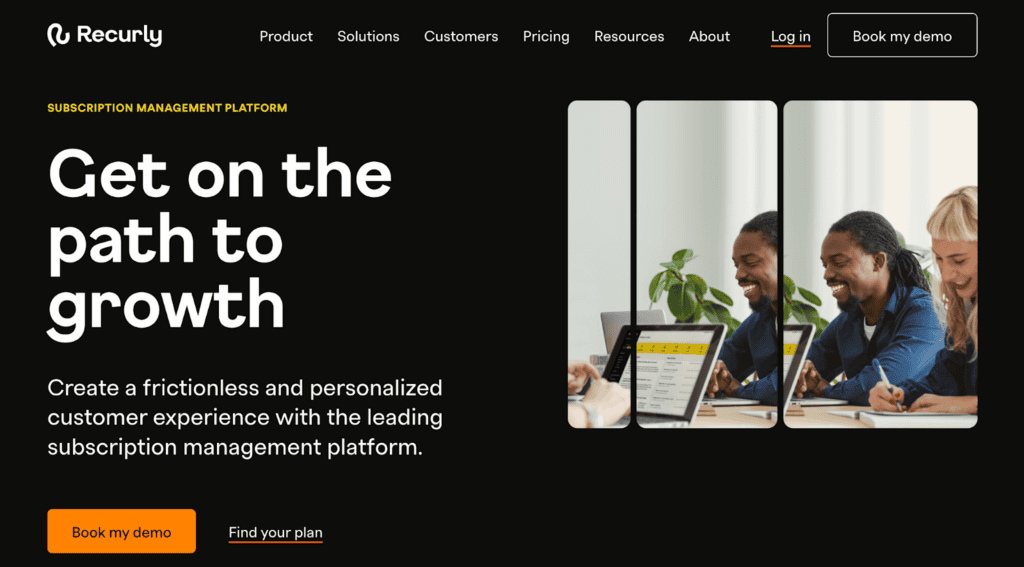
Recurly’s Key Features
- Automated billing and invoicing: Recurly automates the creation and management of recurring invoices, ensuring consistent billing cycles and reducing the risk of errors. This feature helps businesses save time while maintaining billing accuracy.
- Dunning management: Recurly’s automated dunning tools effectively reduce failed payments and minimize customer churn. By sending reminders and retrying failed transactions, Recurly helps businesses recover lost revenue and improve retention rates.
- Global currency support: Recurly supports multiple currencies, allowing businesses to expand their reach and cater to international customers. This makes it a suitable option for companies with cross-border operations.
- Advanced analytics: Recurly’s powerful analytics tools provide actionable insights into customer behavior, subscription trends, and financial metrics, enabling businesses to make data-driven decisions to enhance growth. Available metrics are geared toward B2C subscriptions.
- Tax compliance: With built-in tax management tools, Recurly simplifies compliance with regional and global tax regulations, including VAT and sales tax, reducing administrative burdens for global operations.
Recurly pricing
Recurly offers a range of pricing plans to accommodate businesses of various sizes and needs. The Starter plan is designed for startups and small to medium-sized businesses looking to launch and grow their subscription services. This plan is currently offered at $0 per month for the first three months for new customers, with a regular price of $249 per month thereafter. It includes features such as fast plan and add-on creation, flexible pricing models, trials and promotions, robust subscription management, support for over 30 languages, multiple currencies (over 140), and integration with more than 20 payment gateways, including Adyen, Braintree, Cybersource, and Stripe.
For businesses with more complex requirements, Recurly provides advanced plans with additional features and capabilities. These plans are tailored to meet the specific needs of larger enterprises and include enhanced functionalities to support scaling operations. To obtain detailed information about these advanced plans and to receive a personalized quote, interested businesses are encouraged to contact Recurly directly.
5. Stripe
Stripe Billing is a flexible and developer-friendly solution for managing recurring billing, making it a top choice for businesses that value custom integrations and adaptability. Known for its powerful API and seamless integration with the broader Stripe ecosystem, Stripe Billing empowers companies to build tailored workflows that align with their unique needs.
However, while Stripe offers robust billing features, it falls short in advanced subscription management and revenue recognition tools compared to platforms like Maxio. For businesses with complex financial processes, Stripe’s capabilities may not be as comprehensive.
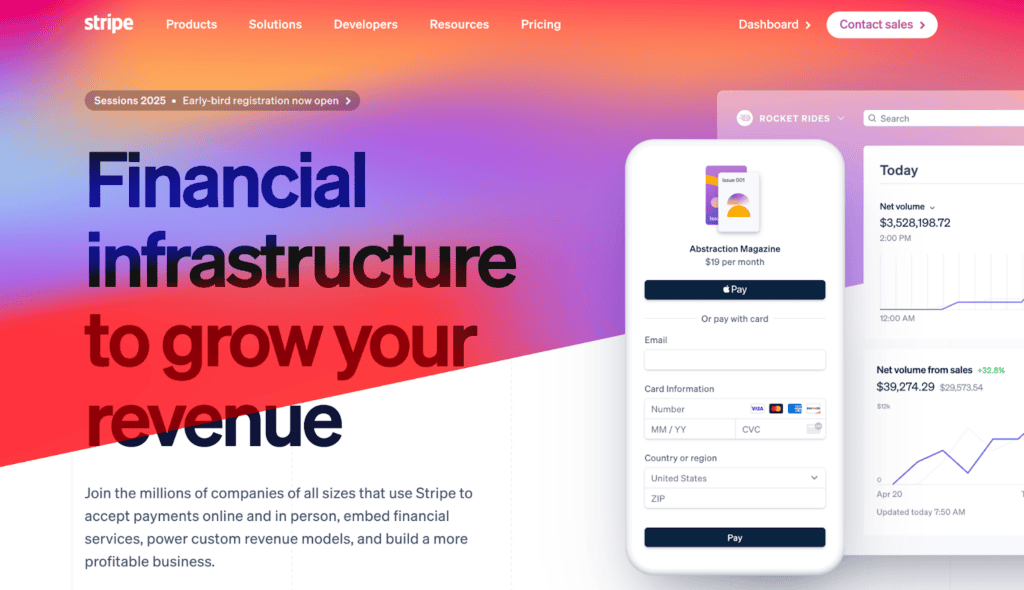
Stripe’s Key Features
- Developer-friendly API: Stripe’s API is highly versatile, allowing developers to create custom billing workflows and integrations. This makes it an ideal choice for tech-savvy teams that prioritize flexibility and control over billing operations.
- Automated recurring billing: Stripe simplifies subscription billing by automating processes like invoicing, payment collection, and renewals, ensuring a smooth and error-free billing cycle.
- Global payment support: Stripe excels at handling international payments, supporting multiple currencies and markets. Its built-in tools make cross-border transactions seamless for businesses with a global customer base.
- Customizable billing workflows: With Stripe, businesses can design tailored billing processes to accommodate specific customer journeys, offering greater flexibility in subscription management.
Stripe Billing is a strong choice for companies seeking a developer-focused platform for recurring billing, but those needing advanced financial management or revenue recognition tools may find a more suitable option in Maxio.
Stripe pricing
Stripe Billing offers two primary pricing options to accommodate various business needs:
- Pay-as-you-go: This model is ideal for businesses with low or unpredictable billing volumes. It charges 0.7% per recurring transaction, allowing you to pay only for what you use without any recurring fees.
- Subscription plan: For businesses seeking more predictable monthly costs, Stripe provides a subscription plan at $620 per month with a one-year contract. This plan covers up to $100,000 in monthly billing volume, with an additional fee of 0.67% for any billing volume exceeding this threshold.
Custom pricing options are also available for companies with large billing volumes or unique business models. It’s also important to note that these fees are specific to Stripe Billing and are separate from Stripe’s standard payment processing fees.
6. Paddle
Paddle is a premium subscription billing platform specifically designed for SaaS companies aiming for global growth and compliance. By combining subscription management and payment processing into one unified platform, Paddle simplifies the complexities of managing international customers. A standout feature is global tax management, which ensures compliance with VAT and other regional tax regulations—a critical advantage for businesses operating across multiple markets.
However, despite its strengths in international compliance, Paddle lacks the advanced revenue recognition and billing automation capabilities offered by Maxio.
Paddle’s Key Features
- Automated billing and invoicing: Paddle streamlines recurring billing for SaaS companies by automating invoicing and payment collection. This reduces manual effort, ensuring billing processes run smoothly and efficiently.
- Global tax compliance: The platform handles VAT and regional sales taxes across multiple countries, eliminating the need for separate tax compliance tools. This feature is especially valuable for SaaS companies with an international customer base.
- Multiple pricing models: Paddle supports various pricing models, including tiered and usage-based billing. This flexibility allows businesses to tailor their subscription plans to different customer needs and market demands.
- Fraud protection: Paddle includes built-in fraud protection to safeguard transactions, minimizing the risk of fraudulent activities and ensuring secure payment processing.
- Localization for global growth: Paddle enhances the customer experience with localized payment options, currencies, and languages. This makes it easier for SaaS companies to build trust and drive adoption in different regions.
While Paddle excels in simplifying global operations and ensuring tax compliance, its limited automation and analytics features may not meet the demands of fast-growing businesses with complex financial operations. For those seeking more advanced capabilities, Maxio remains the better choice.
Paddle pricing
Paddle offers a straightforward pricing structure designed to accommodate businesses of various sizes. Their standard model operates on a pay-as-you-go basis, charging 5% plus 50¢ per transaction.
This approach is particularly advantageous for smaller businesses and startups, as it aligns costs directly with revenue, ensuring that fees scale with business growth. For larger enterprises or those with more complex needs, Paddle provides custom pricing options. These tailored plans offer access to premium services and dedicated success management, ensuring that the platform can adapt to the unique requirements of scaling businesses.
7. Stax Bill
Stax Bill is a subscription billing platform designed to offer cost-effective solutions for growing businesses. Its flat-rate pricing model, devoid of overage charges, provides predictable costs, making it appealing to companies seeking transparency as they scale. However, while Stax Bill delivers solid billing features, it may not offer the same level of customization, global payment options, or advanced revenue recognition capabilities as platforms like Maxio, which are better suited for businesses with complex billing needs.
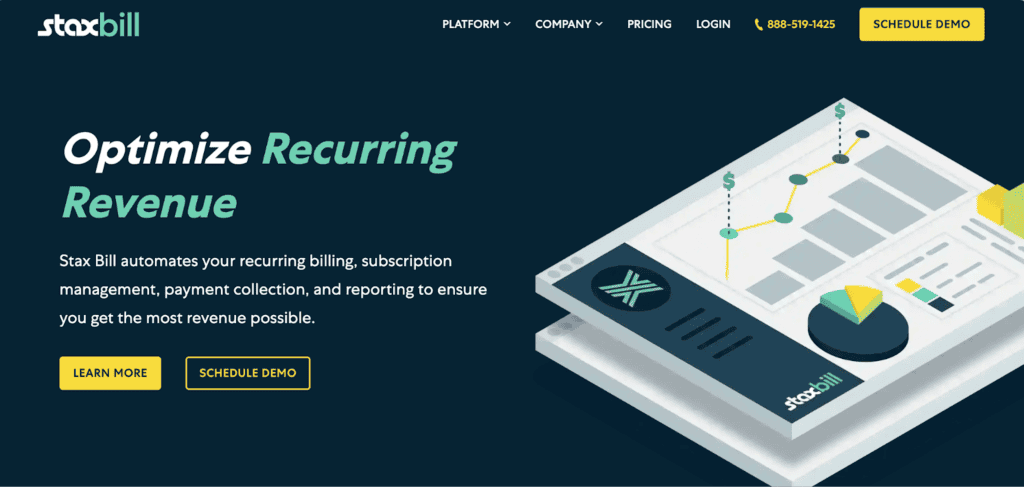
Stax Bill’s Key Features
- Flat-rate pricing: Stax Bill offers a straightforward pricing structure with no overage charges, allowing businesses to manage expenses predictably.
- Automated billing: The platform automates invoicing and recurring billing processes, reducing manual efforts and minimizing errors.
- Flexible pricing models: Stax Bill supports various pricing structures, including tiered, flat-rate, and usage-based models, accommodating diverse business requirements.
- Analytics and reporting: The platform provides tools for tracking revenue and customer subscriptions, offering insights to inform business decisions.
- Payment gateway integrations: Stax Bill integrates with multiple payment gateways, facilitating seamless transactions and enhancing customer experience.
Stax Bill Pricing
Stax Bill’s pricing model is designed to be transparent and predictable. For businesses with up to $85,000 in monthly billings, the Growth plan starts at $499 per month, billed annually. This plan includes all features with no overage charges or hidden fees. For enterprise-level businesses with larger customer bases and diverse subscription offerings, Stax Bill offers customized pricing to meet specific needs.
This flat-rate pricing structure ensures that businesses can scale without unexpected costs, making Stax Bill an attractive option for those seeking cost certainty in their subscription billing solutions.
8. Billsby
Billsby is a user-friendly subscription billing platform tailored for small SaaS businesses and startups. It offers a free tier with unlimited customers and plans, making it an attractive option for emerging companies seeking cost-effective solutions. However, while Billsby provides essential billing functionalities, it may not offer the advanced analytics, global payment options, and revenue recognition features that larger or more complex businesses require for scaling globally.
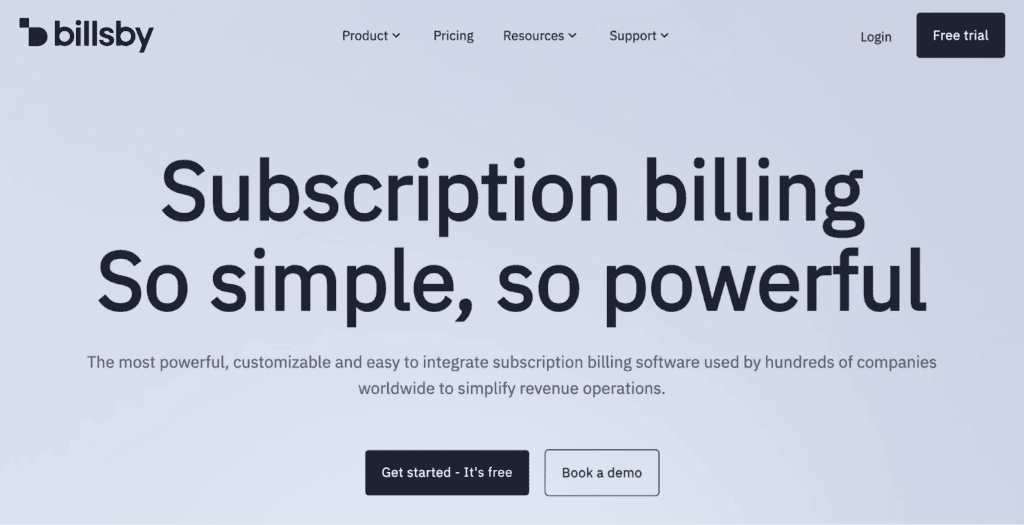
Billsby’s Key Features
- Automated billing: Billsby streamlines the recurring billing process, automating invoicing and payment collection to reduce manual efforts and minimize errors.
- Dunning management: The platform includes automated dunning processes to handle failed payments, helping to reduce customer churn and recover revenue effectively.
- Multiple pricing models: Billsby supports various pricing structures, including tiered and usage-based models, allowing businesses to tailor their offerings to diverse customer needs.
- Customizable invoicing: Businesses can create personalized invoicing solutions, aligning billing communications with their brand identity and enhancing the customer experience.
- Integration with payment gateways: Billsby integrates with popular payment gateways, facilitating seamless transactions and providing flexibility in payment processing.
Billsby Pricing
Billsby offers a flexible and accessible pricing structure:
- Free plan: This plan allows businesses to set up their subscription services without any limitations on customers or plans. It provides an opportunity to configure and test the platform thoroughly before launching.
- Core plan: Priced at $45 per month, the Core Plan includes all the features necessary to power a subscription business. It accommodates up to five users and offers unlimited products, plans, and cycles. Additionally, a 0.4% fee applies to revenue exceeding $15,000 per month.
- Pro plan: At $135 per month, the Pro Plan encompasses all Core features and supports up to 25 users. It includes advanced functionalities such as user permissions, multiple payment gateways, and ACH payment processing. A 0.5% fee applies to revenue exceeding $30,000 per month.
- Custom plan: For businesses with unique requirements, Billsby offers bespoke solutions tailored to specific needs. Interested companies can contact Billsby directly to discuss custom pricing and features.
This tiered pricing model ensures that as businesses grow, they can scale their subscription management capabilities accordingly, maintaining cost-effectiveness and operational efficiency.
Choosing the best recurring billing solution for your business
Selecting the right recurring billing solution is a strategic decision that impacts your business’s ability to efficiently manage subscriptions, payments, and revenue. When evaluating your options, you should consider their pricing flexibility, automation capabilities, global payment support, and scalability for growth.
But when it comes to an all-in-one recurring billing powerhouse, Maxio is the best choice for SaaS companies.
With unmatched advanced billing automation, revenue recognition, and seamless payment integrations, Maxio is uniquely positioned to meet the needs of SaaS companies across industry verticals and varying stages of growth.
Want to see if Maxio is the right fit for your needs? Schedule a demo today or sign up for a 30-day free trial to get started.
Frequently asked questions
What is a subscription billing platform?
A subscription billing platform is a tool designed to manage recurring customer payments and billing cycles for subscription-based services. These platforms automate key processes such as invoicing, payment collection, and subscription management, ensuring seamless operations for businesses offering recurring products or services. They also provide features like pricing model customization, dunning management to reduce churn, and analytics for tracking subscription performance, making them essential for companies that rely on predictable, recurring revenue streams.
What is recurring billing software?
Recurring billing software is a tool used to automate regular, repeated billing processes for businesses offering subscription-based services. It ensures that customers are billed accurately and on time, eliminating manual errors and reducing administrative overhead. By handling tasks like generating recurring invoices, processing payments, and managing subscription renewals, this software helps businesses maintain consistent cash flow and improve operational efficiency.
What is the subscription billing method?
The subscription billing method refers to a payment structure where customers are charged periodically—typically on a monthly or yearly basis—for ongoing access to a product or service. This method is commonly used by businesses offering services like software-as-a-service (SaaS), streaming platforms, and membership-based offerings.
How does automating invoicing benefit SaaS businesses?
Automating invoicing offers significant benefits for subscription-based SaaS companies by enhancing efficiency, reducing errors, and improving cash flow management. By streamlining the invoicing process, automation eliminates the need for manual billing, allowing teams to focus on strategic initiatives rather than administrative tasks.
What is the difference between billing and subscription management?
While billing and subscription management are closely related, they serve distinct functions within a subscription-based business. Billing focuses on the invoicing process, including generating and sending invoices, collecting payments, and processing refunds. On the other hand, subscription management involves handling the entire lifecycle of customer subscriptions. This includes managing sign-ups, upgrades, downgrades, cancellations, and renewals.

